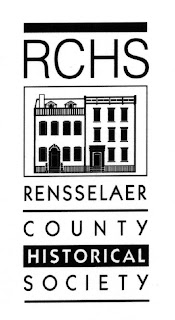 Stepping into the past at Founder’s Day Weekend in Ogdensburg, NY July 18-19 is an opportunity for visitors to witness the crafts and trades of our ancestors beyond the activities of the French and Indian War re-enactment. To kick off the weekend, there will be a free concert of colonial music Friday evening in Library Park. Linda Russell, an 18th-century balladeer, will perform courtesy of the St. Lawrence County Arts Council. Ms. Russell will also perform Saturday and Sunday on Lighthouse Point.
Stepping into the past at Founder’s Day Weekend in Ogdensburg, NY July 18-19 is an opportunity for visitors to witness the crafts and trades of our ancestors beyond the activities of the French and Indian War re-enactment. To kick off the weekend, there will be a free concert of colonial music Friday evening in Library Park. Linda Russell, an 18th-century balladeer, will perform courtesy of the St. Lawrence County Arts Council. Ms. Russell will also perform Saturday and Sunday on Lighthouse Point.
After an absence of many years, lace making is returning. In the 1700s, lace was an essential fashion statement on the clothes of well-to-do men and women. Girls learned at an early age to make lace that brought extra income to a family.
New this year is a demonstration bakery. The homey smell of fresh-baked bread usually brings a flood of good memories. A unique part of New France will come to life in the scent and sight of crusty loaves and buns.
The blacksmith and tinsmith are basic to Founder’s Day Weekend. As the blacksmith describes his trade, he will no doubt be hammering, riveting or welding some traditional piece of equipment ordered by a re-enactor. The tinsmith displays lanterns, candlesticks, and tinderboxes once indispensable in a colonial household, and now found in the camps of re-enactors or the homes of collectors.
Collectors, too, may take a fancy to the pottery to be made and sold on site. Jugs, mugs, bowls and other essentials will be turned on the potter’s wheel with an eye to tradition and practicality.
Re-enactors add to their kits and replace lost items by purchasing items at Founder’s Day Weekend. They patronize the sutlers, the canvas-covered vendors that spring up at re-enactments selling just about everything a person from the 18th century or the 21st century may need or fancy.
Vital to the weekend are the re-enactors portraying the French, British and Native troops of the mid 1700s. Their uniforms, arms, camps, drills and battle tactics give substance and color to our history. Re-enactors also spend money in the community, so expect to see them in their colonial garb in the stores and restaurants of Ogdensburg.
The display of antique naval arms and equipment that debuted last year is coming back to round out the riverside aspect of Founder’s Day Weekend. Traditional boats in the navy camp are expected from Quebec, Ontario and New York. The historically accurate bateaux will race Saturday morning and engage in battles on the river Saturday and Sunday afternoon.
The armed boats are likely to join in a cannonade at 8:30 P.M. Saturday evening. The guns of Fort Wellington in Prescott, Ontario will duel with the re-enactors’ artillery on Lighthouse Point. The larger Canadian guns will fire slowly, but there will be rapid fire from the smaller guns on the point. The public will be able to watch from Riverside Park and the marina.
Following the artillery pyrotechnics, a free-admission ball featuring English country dance will be held at the Freight House Restaurant in walking distance of Lighthouse Point. “No dancing experience is required,” said the organizer George Cherepon. “Easy-going dance instructors will teach the steps before playing the music, and they then call the steps as the music plays.”
Founder’s Day Weekend is larger this year as the Fort La Presentation Association prepares to host the final New York State 250th anniversary commemoration of the end of the French and Indian War in 2010. Information about Founder’s Day Weekend can be found at www.fortlapresentation.net.
Photo: French boats armed with swivel guns drive away a British boat while skirmishing off Lighthouse Point during a battle re-enacted on the St. Lawrence River at Founder’s Day Weekend in Ogdensburg.






